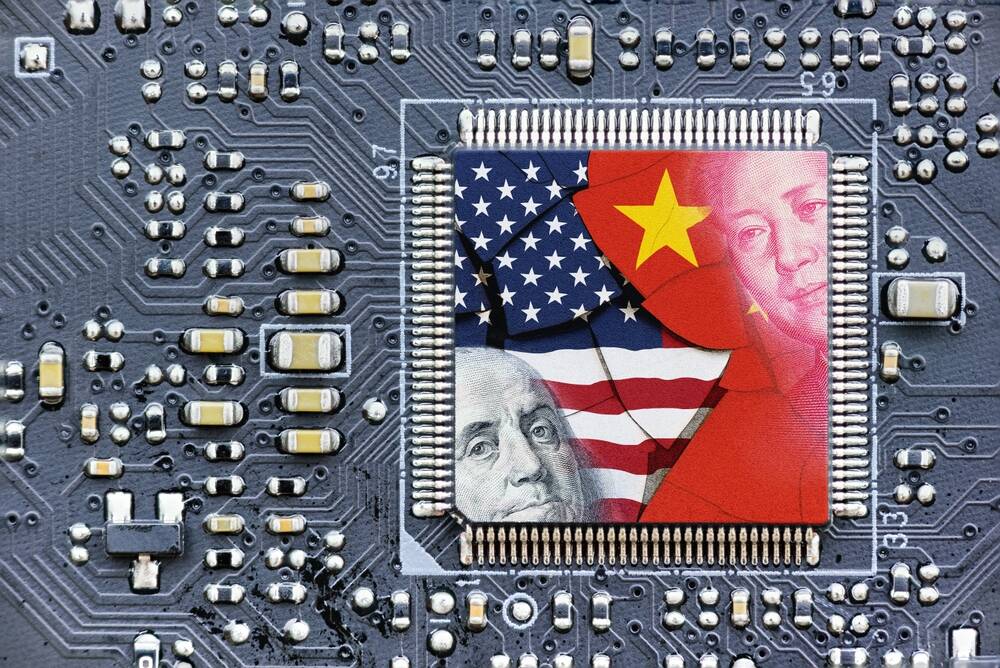Banned US Chipmaking Equipment Still Ending Up In China, Says Report

US bans on exports of advanced chipmaking equipment to China are not working, according to a report from the US-China Economic and Security Review Commission.
The 741-page report [PDF] says that US president Joe Biden's export controls on advanced computing and semiconductor manufacturing equipment "substantially impact China's AI, computing, and semiconductor industries and represent a major advancement in the United States' approach to curtailing China's technology development."
However, analysts have questioned the efficacy of the export controls in light of recent advancements at Semiconductor Manufacturing International Corp (SMIC) and Huawei, the report concedes.
The existence of a SMIC 7 nm processor in Huawei's Mate 60 surprised some earlier this year as the Chinese chipmaker was previously known for making 14 nm chips at best.
- So what if China has 7nm chips now, there's no Huawei it can make them 'at scale'
- Netherlands joins US blockade of Chinese chip industry
- Ex-ASML worker accused of stealing chipmaking secrets for China is Huawei to a new job
- YMTC accuses Micron of 'freeriding' on its 3D NAND patents
One issue outlined in the report is that Chinese semiconductor fabs are finding it easy to get the equipment needed to produce chips only one or two generations behind the leading edge, which are not banned.
With the US Commerce Department's Bureau of Industry and Security "using a 14 nm restriction limit, importers are often able to purchase the equipment if they claim it is being used on an older production line, and with limited capacity for end-use inspections it is difficult to verify the equipment is not being used to produce more advanced chips," states the committee's report.
Another issue is the difficulty in preventing the influx of mass-manufactured generic chips into China.
The report details that the only way controls are effective is when other major players in the global supply chain agree to play along, and even then if action is not taken immediately, China has time to stockpile banned materials, as is the case with deep ultraviolet (DUV) lithography machines.
Upon the Netherlands and Japan agreeing to ban the sales of equipment to China, their imports surged. Semiconductor manufacturing machines from the Netherlands had a 96.1 percent increase in imports to China year-on-year the first eight months of 2023, the report observes.
The commission said that one Beijing countermove to export controls was to increase their control over corporate information flows, an action that had significantly complicated China risk assessments for US businesses.
China has also bet on other industries, like electric vehicles, for domestic technology breakthroughs and is using government subsidies to help its exports gain large shares of the global market, according to the report.
"Its dominance of the electric vehicle (EV) industry at all stages of the production chain stands out as a rare example of China achieving its self-reliance objectives," indicated the authors. ®
From Chip War To Cloud War: The Next Frontier In Global Tech Competition
The global chip war, characterized by intense competition among nations and corporations for supremacy in semiconductor ... Read more
The High Stakes Of Tech Regulation: Security Risks And Market Dynamics
The influence of tech giants in the global economy continues to grow, raising crucial questions about how to balance sec... Read more
The Tyranny Of Instagram Interiors: Why It's Time To Break Free From Algorithm-Driven Aesthetics
Instagram has become a dominant force in shaping interior design trends, offering a seemingly endless stream of inspirat... Read more
The Data Crunch In AI: Strategies For Sustainability
Exploring solutions to the imminent exhaustion of internet data for AI training.As the artificial intelligence (AI) indu... Read more
Google Abandons Four-Year Effort To Remove Cookies From Chrome Browser
After four years of dedicated effort, Google has decided to abandon its plan to remove third-party cookies from its Chro... Read more
LinkedIn Embraces AI And Gamification To Drive User Engagement And Revenue
In an effort to tackle slowing revenue growth and enhance user engagement, LinkedIn is turning to artificial intelligenc... Read more

